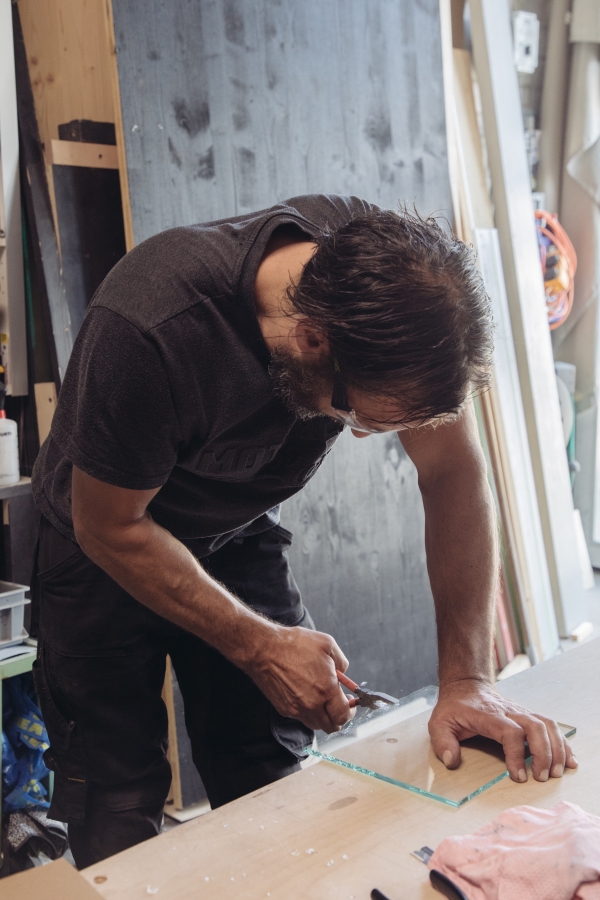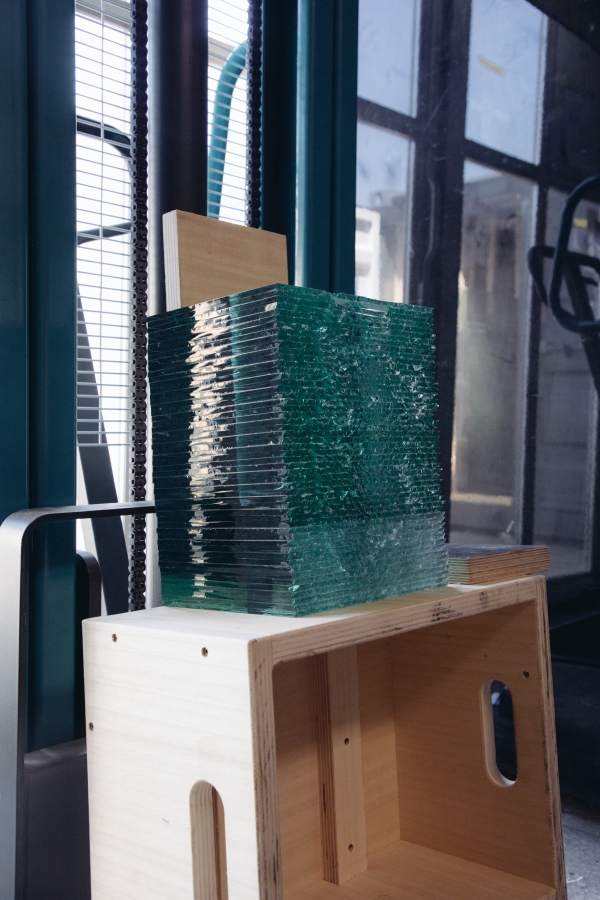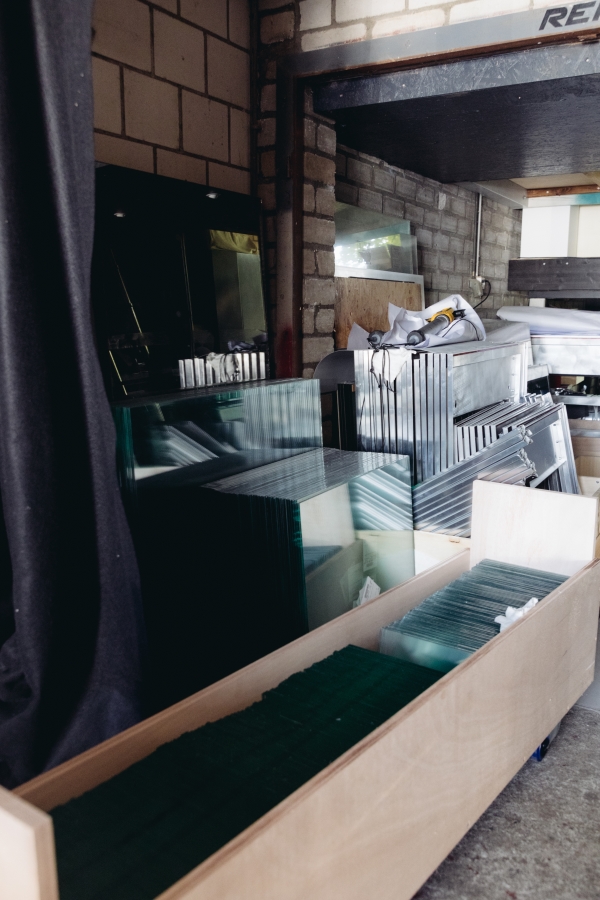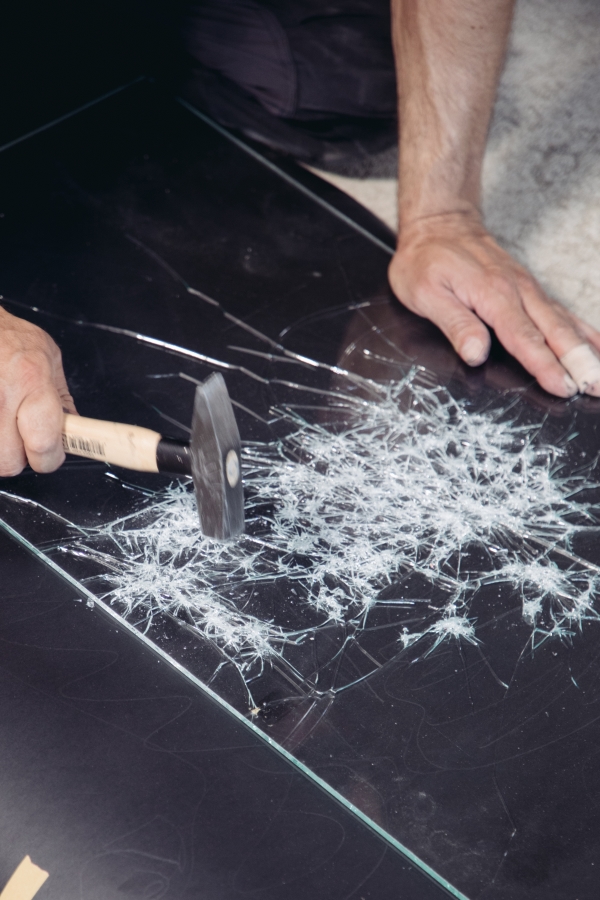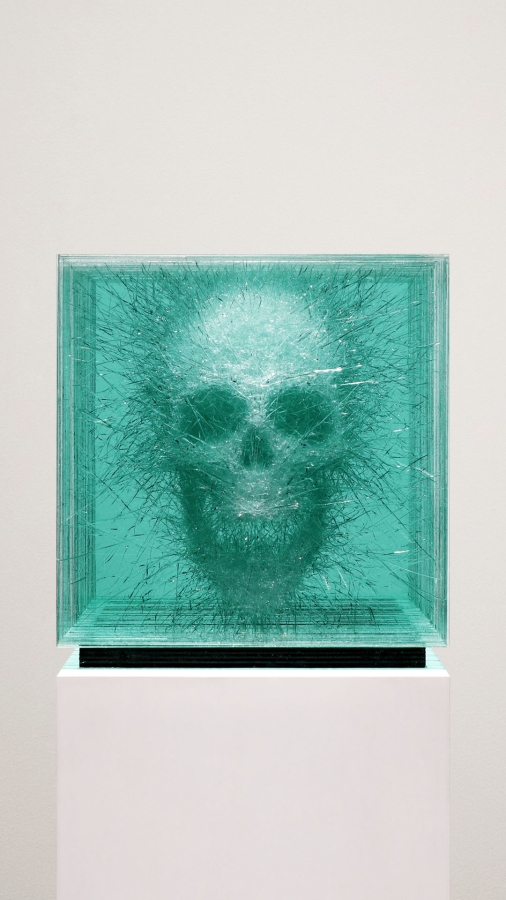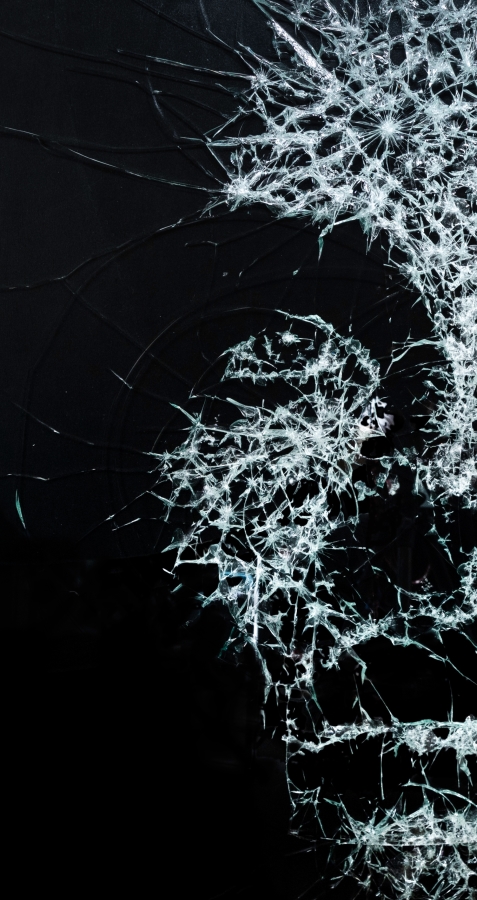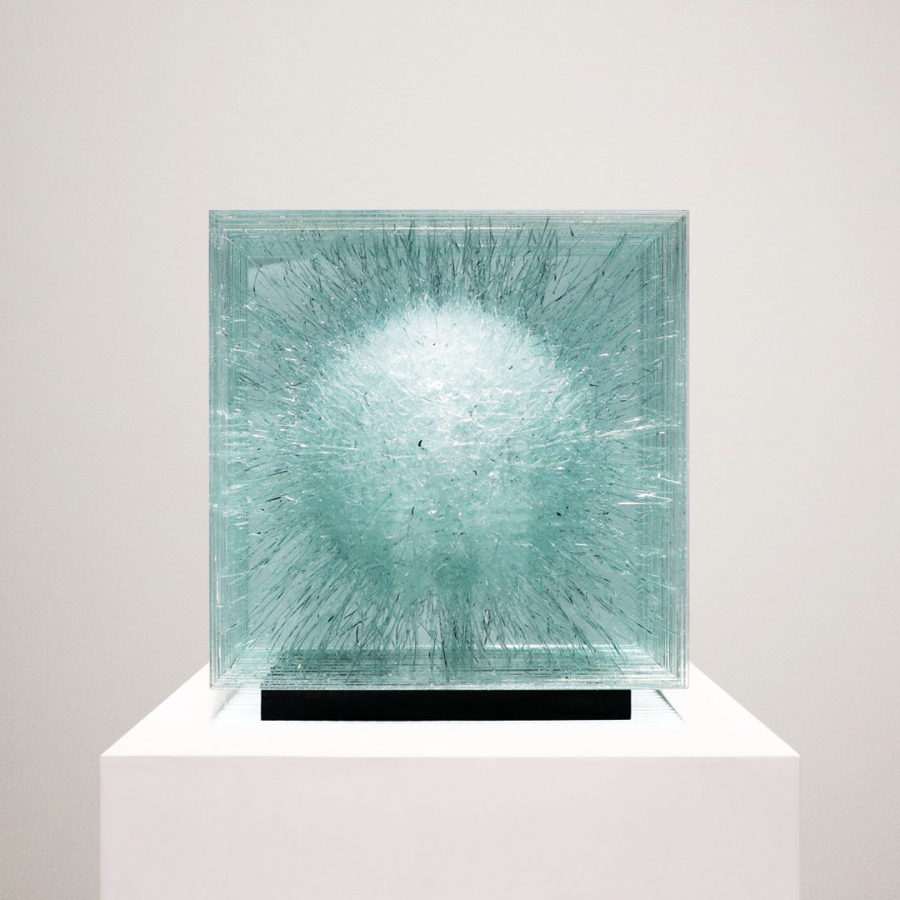
Contemporary glass artist Simon Berger speaks a singular plastic language by exploring the depth of his material, the glass that he pounds, or cracks with a hammer. The window becomes the support of an expansion done by impacts playing with transparency. The closer and briefer the blows, the stronger the contrasts and the shades. In his hands, the hammer is not a tool of destruction, but rather an amplifier of effects.
His lacerated portraits, sculpted in glass, bring the gaze into the intricacies of transparent wounds that he calls “morphogenesis”. A pioneer of this technique, his broken pieces evoke his fascination for faces, especially women’s. With his work on window panes, the artist takes ownership of reality, and probes the expressive capabilities of inert materials destined for factories. His metallic paintings become canvases where perceptions confront interpretations.
Simon Berger began his artistic explorations with spray can before turning to other mediums. A carpenter by training, his natural attraction to wood inspired his first creations out of the street. A lover of mechanics, he also spent plenty of time working on car carcasses. It was while pondering about what to do with a car windshield that his art was born.
“Human faces have always fascinated me”, explained Simon. “On safety glass, these motifs come into their own and magically attract visitors. It is a discovery from abstract fogging to figurative perception.”
A compulsive explorer of materials, he has also sculpted hyper realistic anamorphisms of colored faces using the suspenders of Jeans and T-Shirts, or skulls with the remains of a washed-out ceiling… His art shakes up the interpretation of reality and his aesthetics put an interesting spin on the “broken window” theory.
Simon Berger was born on April 9, 1976, grew up in Herzogenbuchsee (Switzerland), trained as a carpenter after attending primary and secondary school. Lives and works now in his own studio in Niederönz.
Bio source: www.simonberger.art
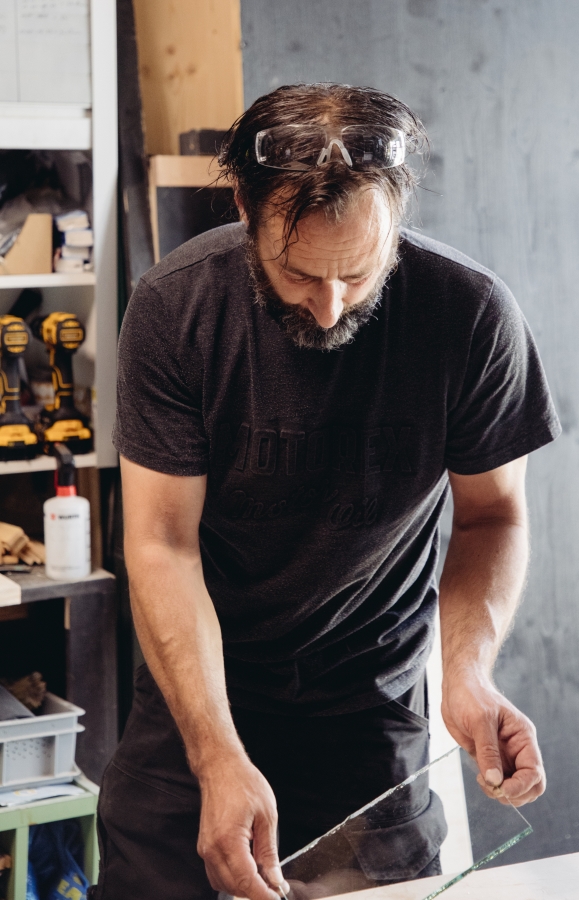
Interview
Artist: Simon Berger
By Carol Real
Can you tell us a little about your background? How did you get started in the art world?
When I was young, I completed an apprenticeship as a carpenter, and then worked for years in this profession. As a craftsman, I spent every day working with my hands and various materials. The first work of art I made was a gift for my now wife. I created a portrait of her; however, at that time, I was using spray cans to paint. Seeing the joy in her eyes when I gave her the work, and the appreciation I received for it, filled me with enjoyment. At that moment, I realized that I wanted to continue to discover artistic creation, and to further explore my own artistic language.
Did you always know you wanted to pursue art for a living?
I was aware that the financial aspect of being an artist would be very difficult. However, for me it was a dream to be able to do what I love to do most: art. There was no other option for me but to make art.
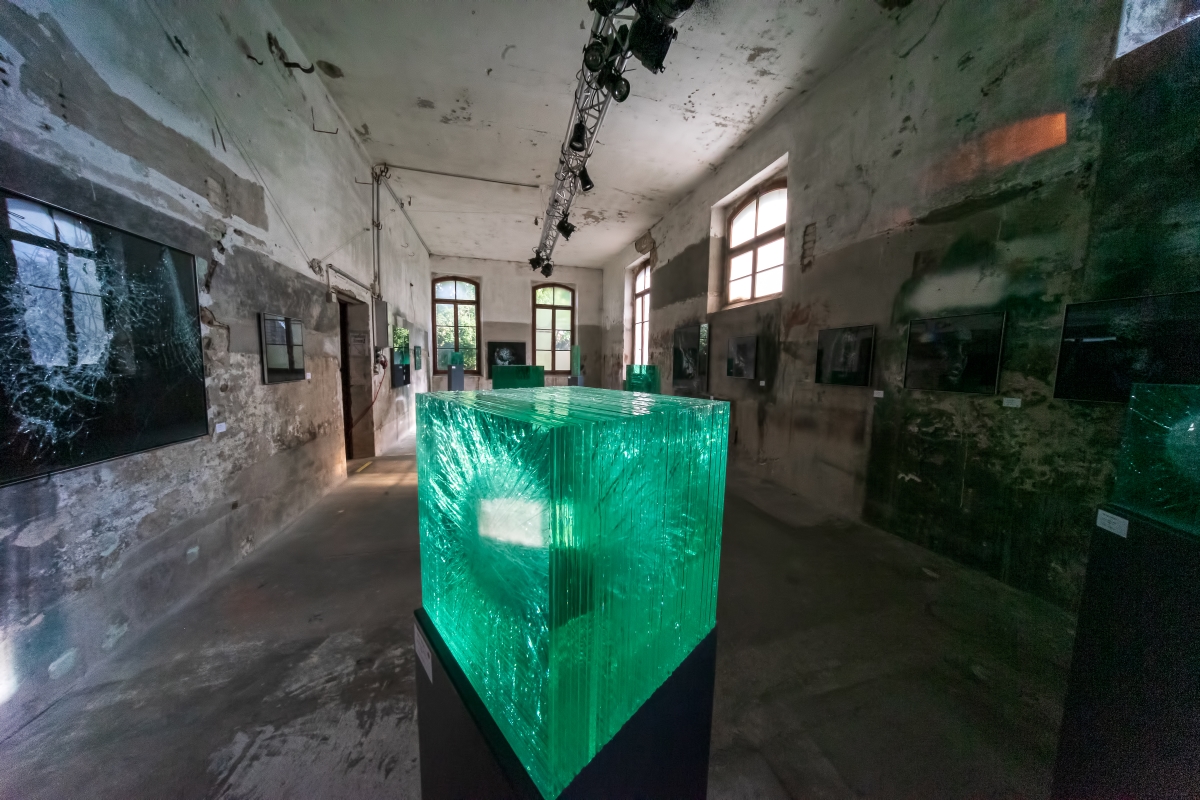
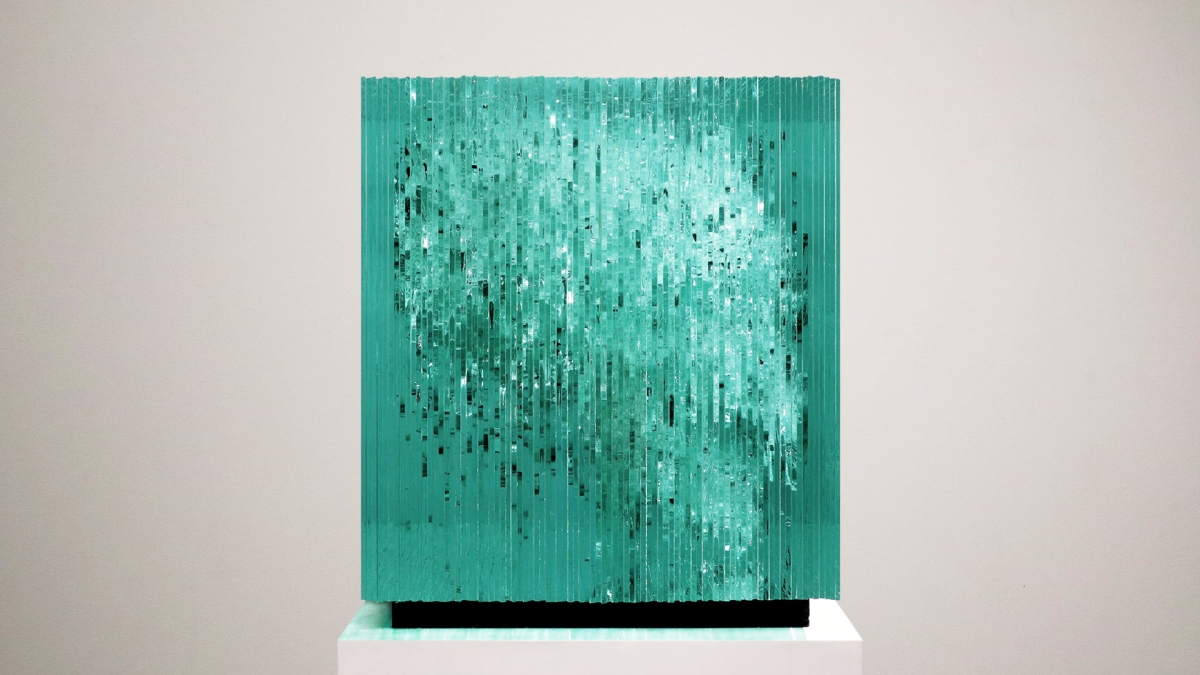

Who were your mentors at the beginning of your career?
Since I didn’t receive any professional art training, I didn’t have mentors in the classical sense that accompanied me as an emerging artist. However, I talked to many people about art in general. From these conversations, I took away elements and inspiration that made sense to me. I then tried to implement these thoughts. In particular, my idols were other artists who moved the art world with something new and ingenious, and were successful. For example, I was fascinated by the force and layering in sculptures by Tony Cragg, or sculptures by John Chamberlain, who works with crushed car steel. Also, Donald Judd’s clearly structured works were a source of inspiration.
How did you come to specialize in figurative sculpture using broken glass?
As someone who completely changed careers when I began to produce art, I was initially interested in how I could make something figurative appear on an initially transparent pane. I was primarily concerned with the photorealistic depiction of a figure on this clear material. In the meantime, figuration has become less of a focus for me in my works, and I am increasingly interested in installation. I try to integrate space more and more, and to create
immersive works that also play with the position of the viewer in a space. What I like about the face as a motif, however, is that faces are universally recognizable. Everyone knows what a face looks like. It takes very little visual information to make a face recognizable; it works worldwide.
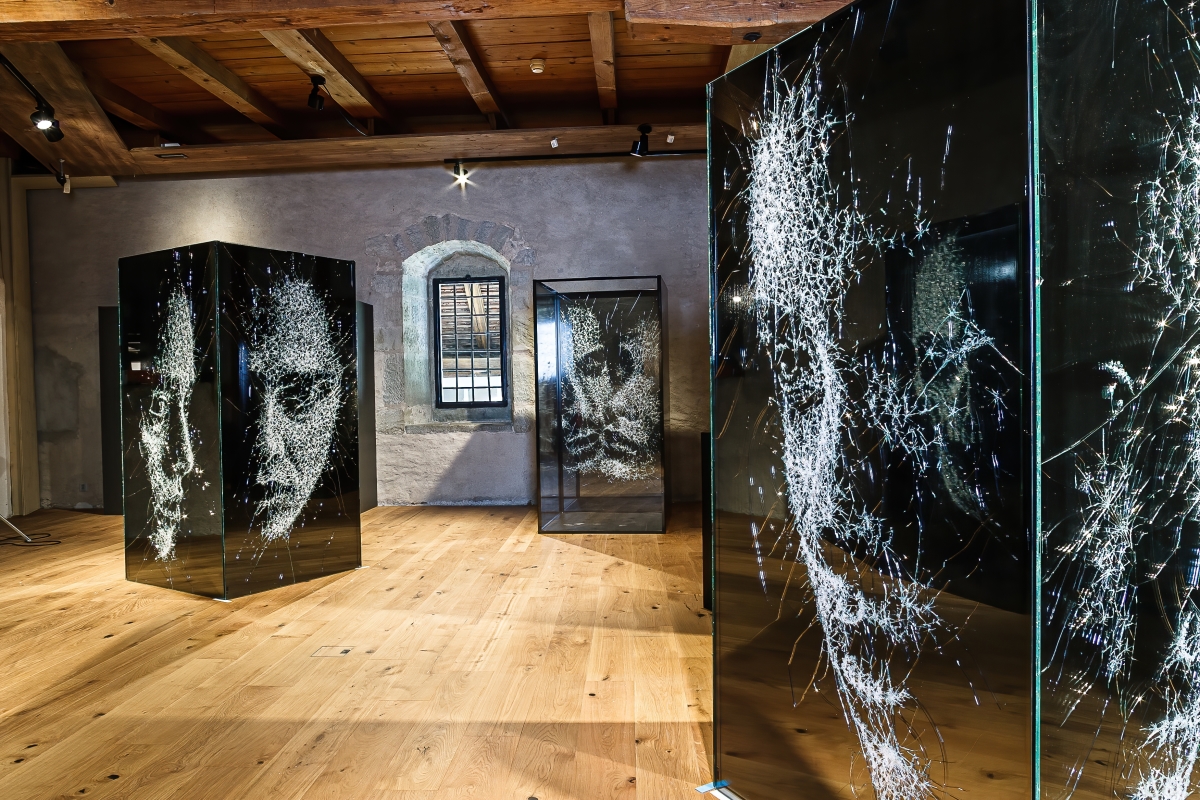
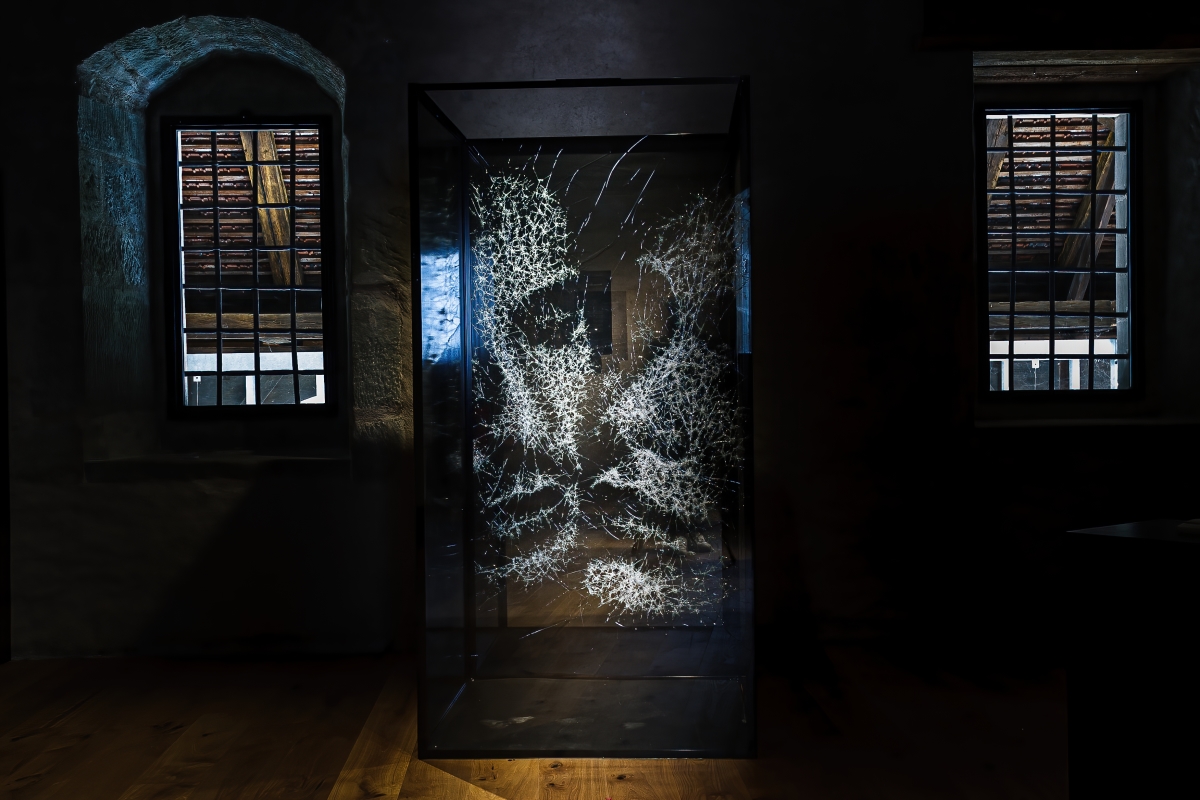
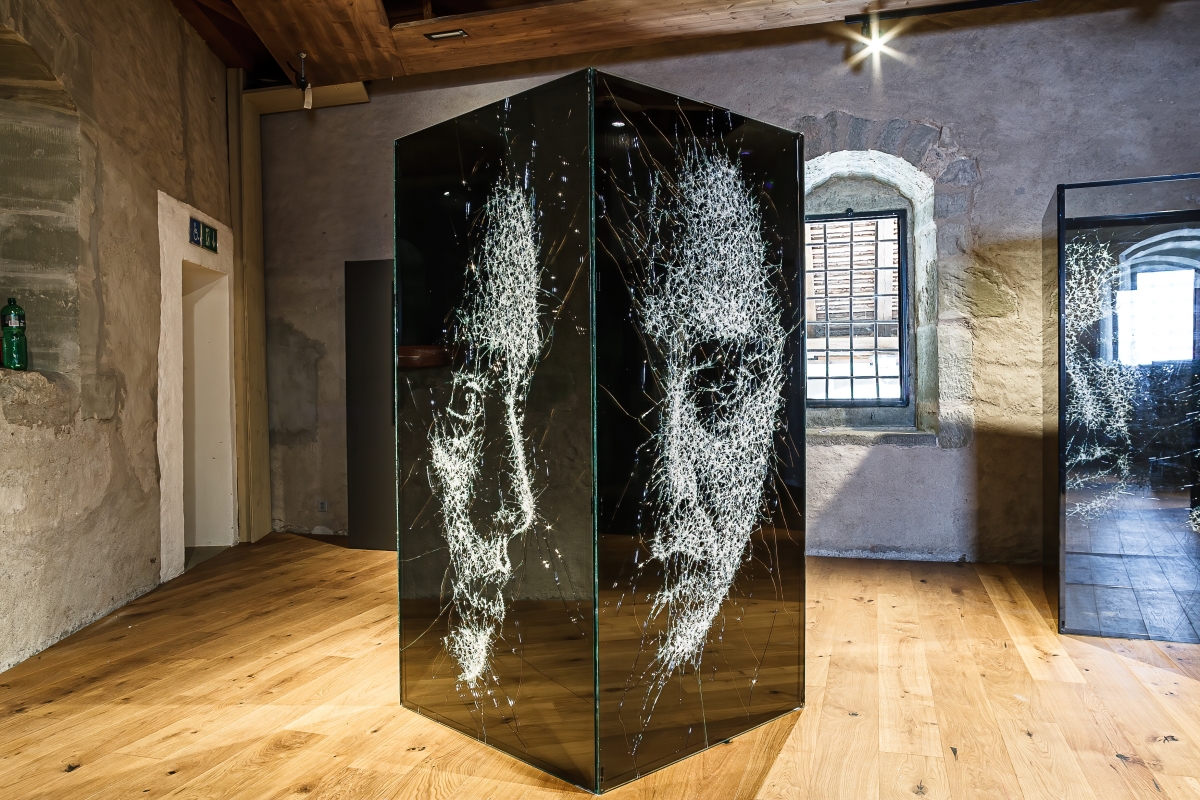
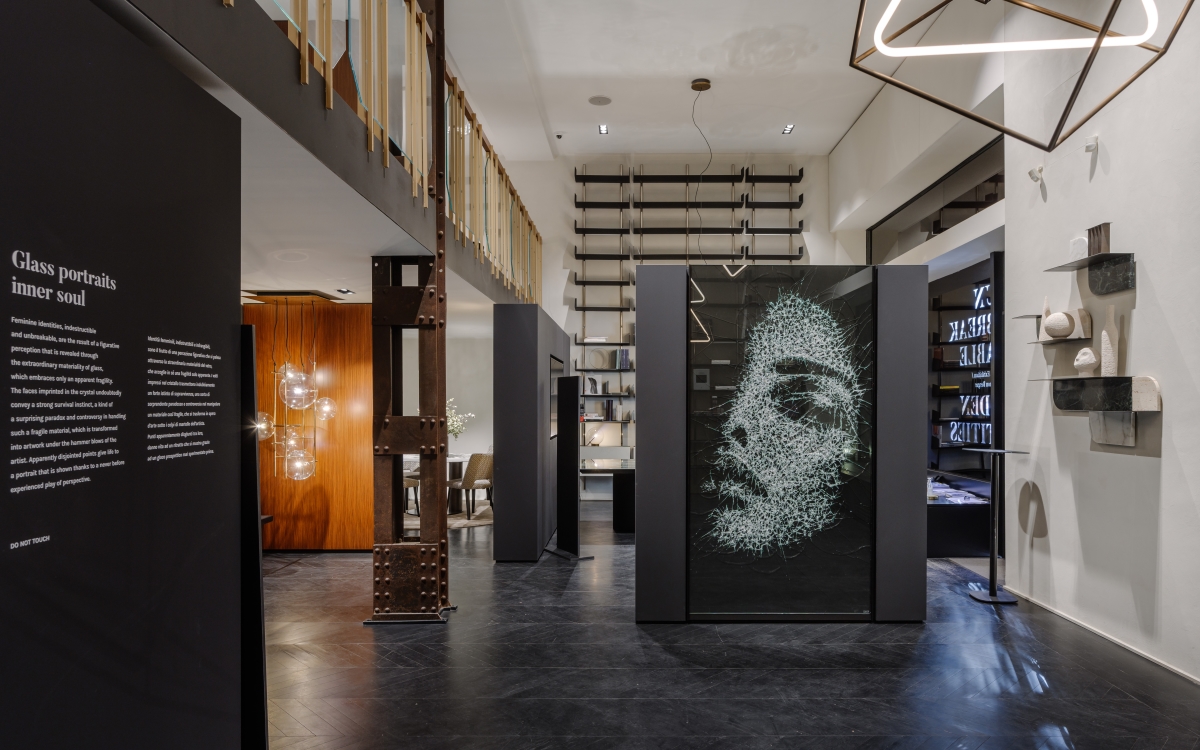
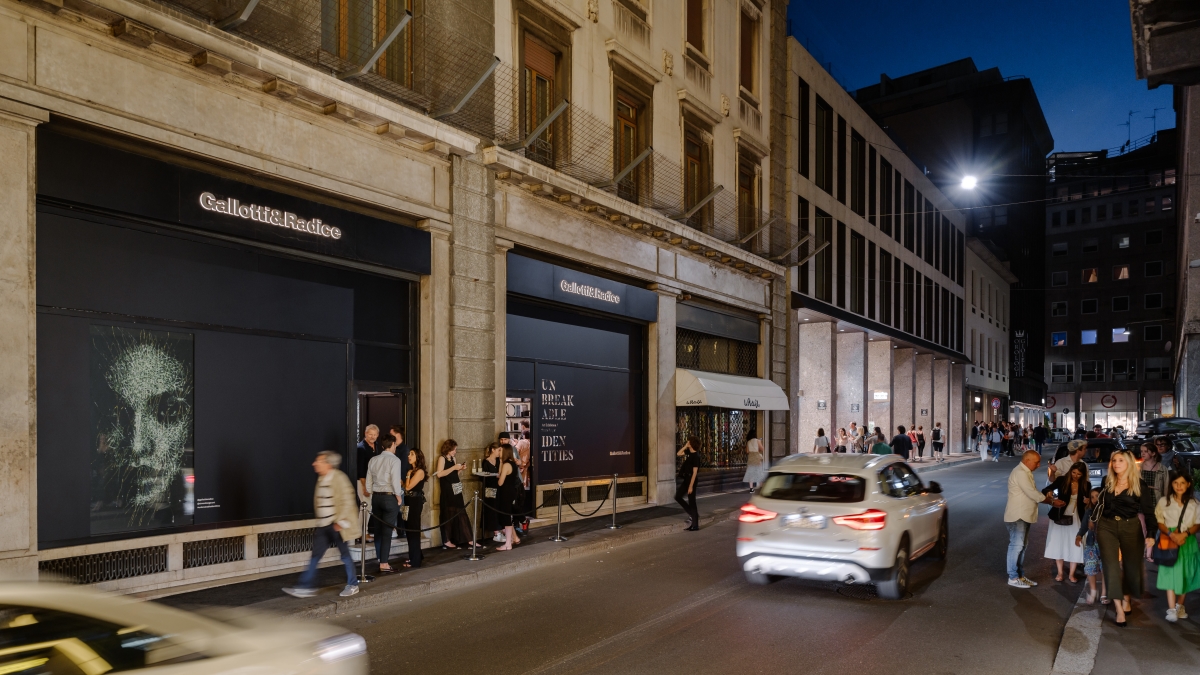
Can you tell us something about the process of creating your work? What challenges do you often encounter when working with glass?
The difficulty of working with glass is, at the same time, what makes my pictures emerge—the fragility. The material does not allow for corrections. So, if one hammer blow is not right, I must discard the whole work. Of course, there is nervousness when I start a new work.
Also, my personal expectations and the fear of not meeting my own requirements sometimes prevent me from starting a new work. In these moments, I then try to block out these thoughts, and concentrate on the essentials: my passion for making art, and my heart and soul that I put into its creation.
How long does it usually take to create a sculpture?
Hammering portraits into glass does not take long, also thanks to the experience with this technique that I was able to gain the recent years. However, the selection of the motive and the photography take a lot of time. And, of course, I am constantly absorbed in experimenting with new things, because I want to discover and develop new things. I am constantly busy looking for new ideas, absorbing inspiration, and training my imagination. When I have an idea, I let the work unfold in front of my inner eye. I will create the work only when I can imagine it, its effect tingles, and feasibility is guaranteed.

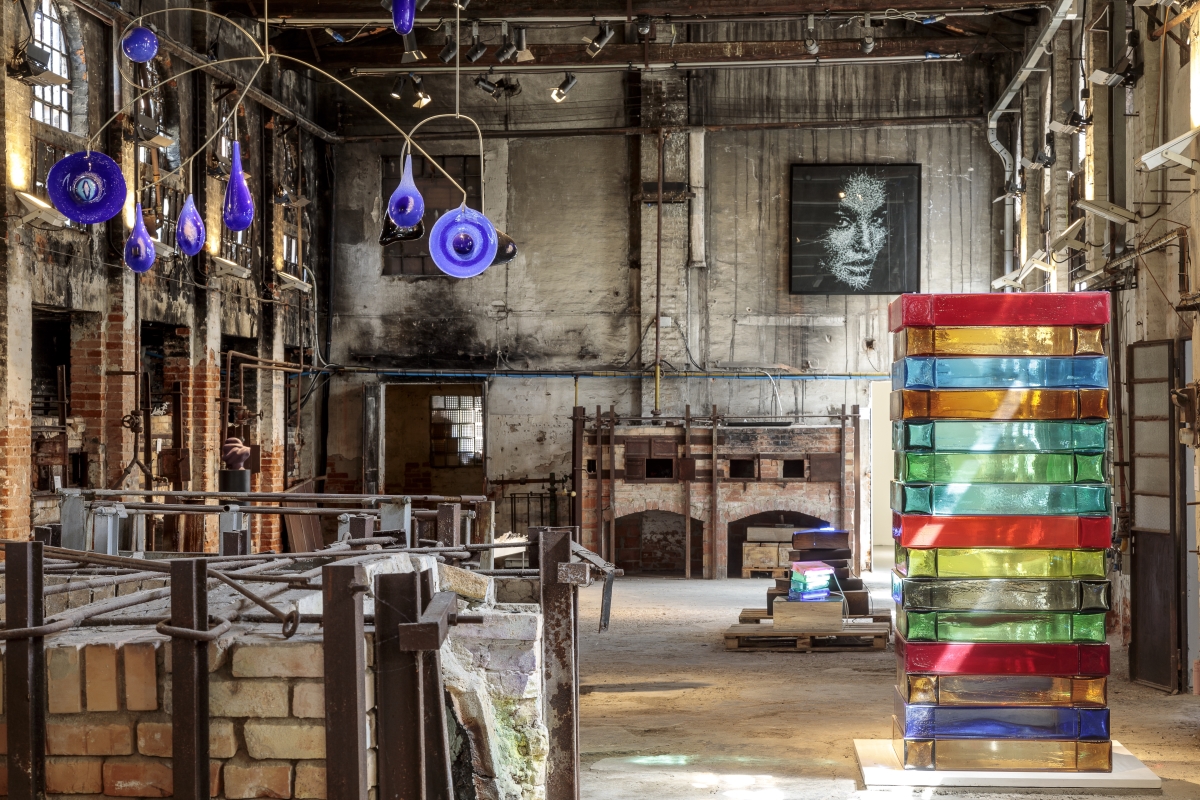
What do you like to do in your free time?
I‘m lucky that my profession and my pastime is creating art. So, there‘s not much free time besides creating art. The precious time that remains, I spend with my family, with my wife and daughter.
Through social media, I was able to find new exhibition platforms, and diverse people around the world have seen my works. The sale of my work and the resulting commercial success has opened new possibilities for exploring space and installations. My solo exhibition at Museo Del Vetro is exactly such a project. My wish for the future is that my art can evolve in the way that feels right to my heart. If the success continues, I look forward to finding my new studio space.
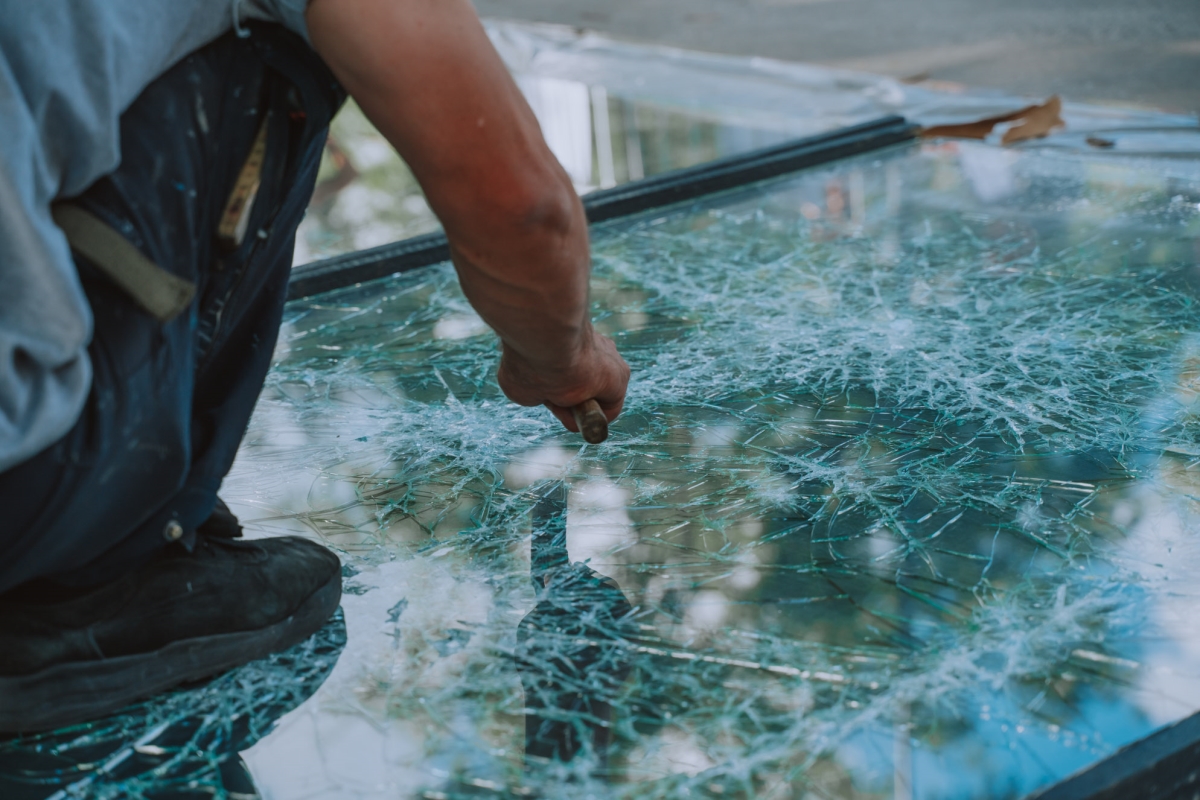
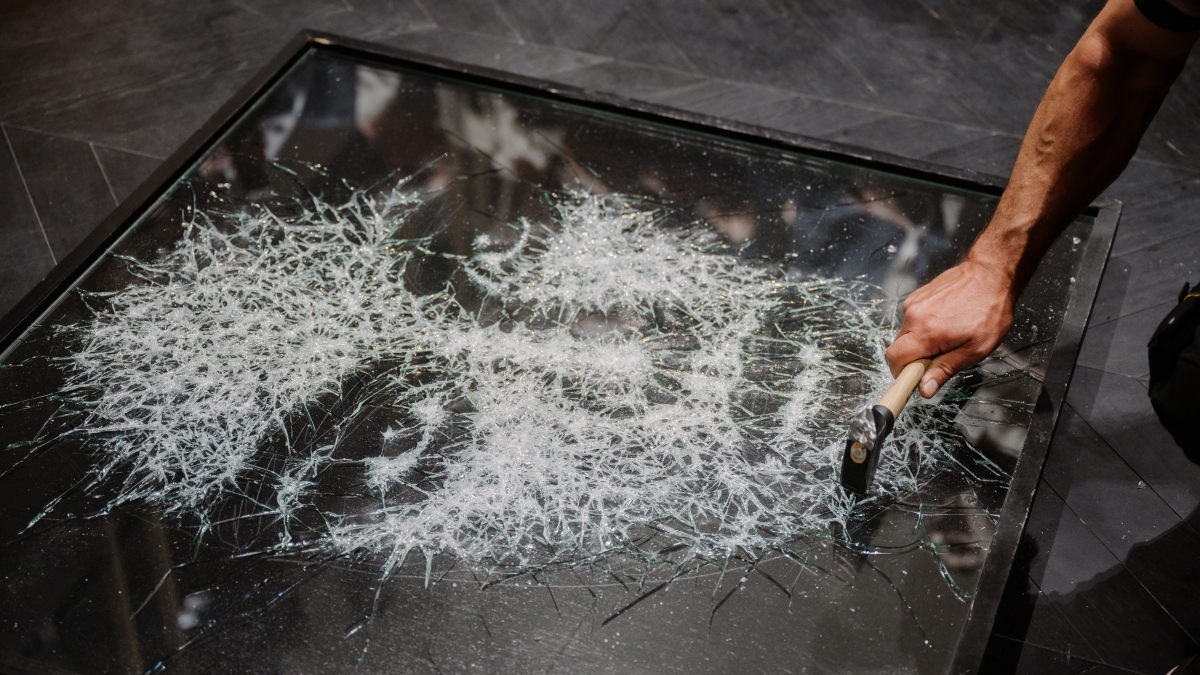
Have you considered exploring other disciplines?
When I work on a project, my focus and heart is always on the current project. The past month, my focus was on the spatial installation at Artstübli Gallery in Basel, Switzerland, where I worked with mirrors and light. The artworks that fascinate and touch me are rather few. Innovation excites me the most.
Architecture as a discipline has always interested me very much; this is perhaps a result of my background in carpentry. I especially like an interdisciplinary approach—the mixture of art and architecture and projects that combine both. For instance, Not Vital is artist who inspires me again and again.
Can you tell us about your upcoming exhibition at the Museo del Vetro?
It is an insanely exciting time for my artistic development. This new context allows for a transformation of my ideas that are currently in the process of being created. The change is exactly what inspires me. Transformation is also at the center of my art: a portrait emerges from broken glass; beauty emerges from destruction.
Of course, it is a great honor for me as an artist, but also personally, to show my “destroyed“ glass works in this stronghold of glass making. It is an exciting new playground for the unfolding of my works. Transformation is constantly present in glasswork: the heating, the fusing, the shaping of the glass, and the coloring. The fact that I can now exhibit here with destroyed glass works is a great milestone.
In the Glasstress exhibition last year, I was able to exhibit with artists such as Tony Cragg, Erwin Wurm, Jaume Plensa, and Thomas Schütte. Now my works are shown in a solo exhibition, as was the case of Tony Cragg, who is one of my artist idols.
Your favorite phrase…
It‘s all difficult until it becomes easy.
Editor: Kristen Evangelista
Artist contact www.simonberger.art
